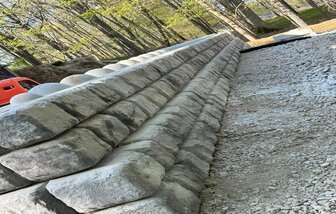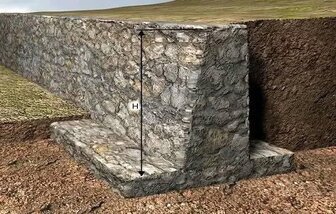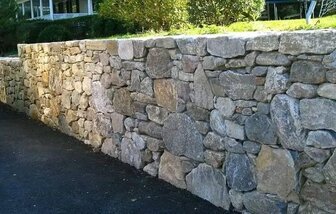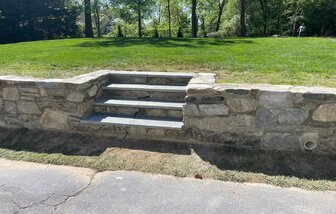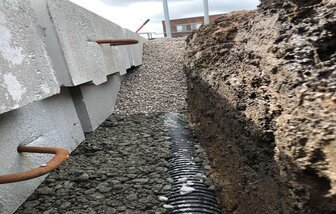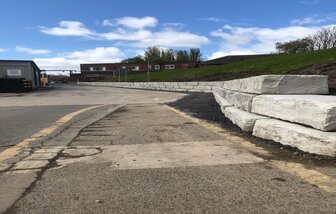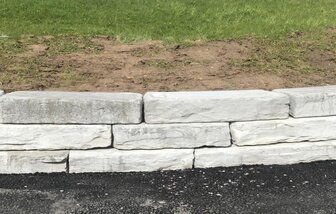Garden Retaining Walls
Discover the essential role garden retaining walls play in landscaping, from erosion control to aesthetic enhancement. Learn about the benefits, popular materials, and design ideas to transform sloped gardens into functional and beautiful outdoor spaces. Follow our step-by-step guide to building and maintaining retaining walls, and explore successful case studies in the UK
Exploring Garden Retaining Walls: Designs and Popular Types in the UK
Garden retaining walls are essential structural elements in landscaping, serving both functional and aesthetic purposes in outdoor spaces.
These walls are designed to hold back soil, thereby preventing erosion and creating level areas in sloped gardens. By implementing garden retaining walls, homeowners and landscape designers can transform uneven terrains into usable, visually appealing spaces.
One of the primary functions of a garden retaining wall is erosion control. In gardens with significant slopes, soil erosion can be a persistent issue, leading to instability and the loss of valuable topsoil. Retaining walls counteract this problem by providing solid barriers that keep the soil in place, thus maintaining the integrity of the garden landscape.
Additionally, these structures can create flat, stable areas that are ideal for planting, outdoor seating, or other recreational activities.
Beyond their practical applications, garden retaining walls also significantly enhance the aesthetic appeal of a garden. They can be constructed from a variety of materials, including natural stone, brick, timber, and concrete, each offering a distinct look and feel.
The choice of material and design can complement the overall style of the garden, adding texture, color, and visual interest to the space. Well-designed retaining walls can serve as focal points, drawing the eye and providing a sense of structure and order to the garden layout.
Functionality is another critical aspect of garden retaining walls. By creating level areas, these walls enable the efficient use of space, making sloped gardens more accessible and versatile.
They can incorporate additional features such as seating, planters, or integrated lighting, further enhancing the usability and enjoyment of the outdoor area. In essence, garden retaining walls are a versatile solution that combines practicality with aesthetic enhancement, making them a valuable addition to any landscape design.
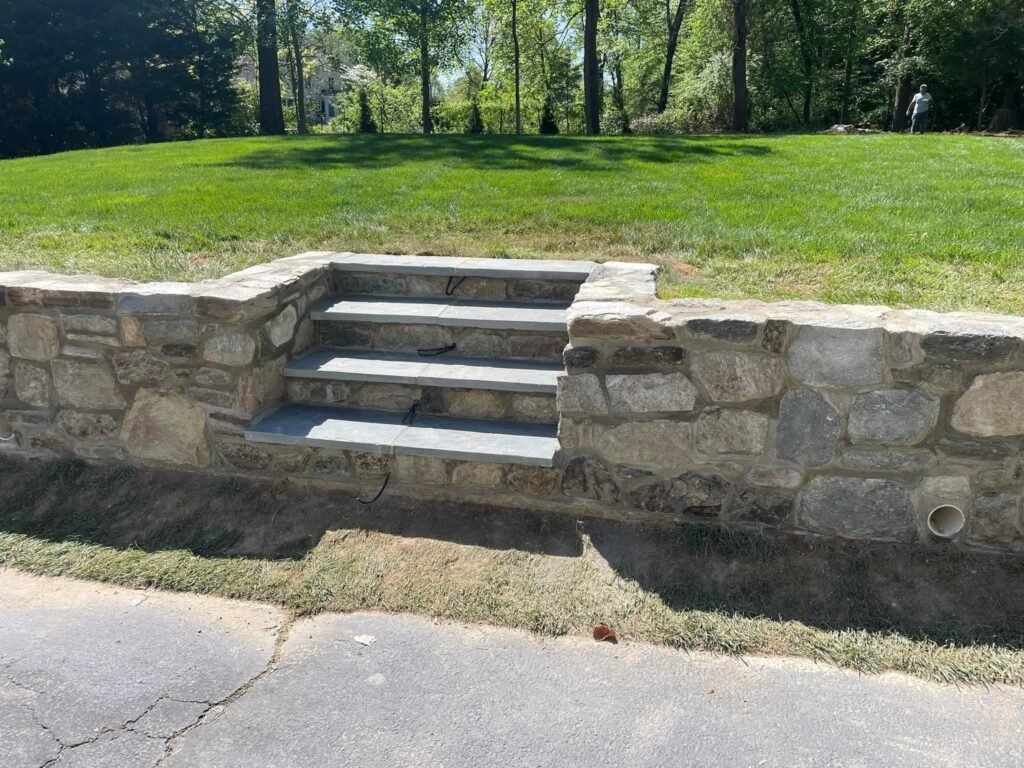
Garden retaining walls serve multiple purposes, each contributing significantly to the functionality and aesthetic appeal of outdoor spaces. One of the primary benefits is structural support. Retaining walls provide essential reinforcement to prevent soil erosion, ensuring that the landscape remains stable and intact. This is particularly important in gardens with varying elevations, where the risk of soil displacement is higher.
Improved water drainage is another critical advantage of garden retaining walls. By managing the flow of water, these structures help prevent waterlogging in garden areas, which can damage plant life and lead to other structural issues. Proper drainage channels can be integrated into the design of retaining walls, directing excess water away from vulnerable areas.
Furthermore, garden retaining walls create additional usable space within the garden. Stepped designs or terracing can transform previously unusable slopes into functional areas for planting, seating, or even recreational activities. This maximization of space is particularly beneficial for gardens with limited flat terrain, allowing homeowners to make the most of their outdoor areas.
In terms of property value, retaining walls can significantly enhance the marketability of a home. A well-designed retaining wall adds a sense of sophistication and order to a garden, making the property more attractive to potential buyers. This improvement is not merely aesthetic; the practical benefits of stability and drainage also contribute to the overall value.
Finally, garden retaining walls offer extensive design opportunities. They can be constructed using a variety of materials, such as stone, brick, or wood, each providing a unique look and feel. This versatility allows homeowners to tailor the design to complement their garden’s style and size, creating a cohesive and visually appealing outdoor environment.
When selecting a garden retaining wall, several critical factors must be considered to ensure both functionality and aesthetic appeal. One of the primary considerations is the height and length of the wall. The dimensions will greatly influence the type of materials used and the structural requirements. Taller walls, for instance, often necessitate more robust construction methods and materials, such as reinforced concrete or engineered stone, to withstand the pressure exerted by the soil behind them.
The type of soil in your garden also plays a significant role in the selection process. Different soils have varying degrees of stability and drainage capabilities. Clay soils, known for their poor drainage, may require additional drainage solutions to prevent water buildup behind the wall, which could lead to structural failure over time. Sandy soils, on the other hand, may necessitate the inclusion of geo-textiles to prevent soil erosion and maintain the wall’s integrity.
Drainage is another essential consideration. Proper drainage systems, such as weep holes, gravel backfills, or perforated pipes, are crucial to prevent water accumulation behind the retaining wall. This not only enhances the wall’s longevity but also mitigates potential water-related issues in the garden, such as soil erosion and plant root rot.
Budget constraints are an inevitable part of the planning process. While natural stone and high-end materials can offer a luxurious finish, they often come with a higher price tag. Conversely, materials like timber or concrete blocks can provide more cost-effective solutions without compromising on durability or appearance. It’s important to balance the desired aesthetic with the available budget, ensuring that the chosen retaining wall aligns with both financial constraints and design preferences.
Lastly, the overall garden design should be harmoniously integrated with the retaining wall. The wall should complement the existing landscape, creating a cohesive and visually pleasing garden environment. Consulting with a professional landscaper or engineer can provide valuable insights and expertise, ensuring that all critical factors are meticulously addressed and that the chosen retaining wall is both functional and aesthetically aligned with the garden’s design.
Garden retaining walls serve as a crucial element in landscape architecture, offering both practical and aesthetic benefits. When designed thoughtfully, retaining walls can transform a garden into a multi-dimensional, visually captivating space. Here are several creative design ideas to inspire your garden retaining wall project:
1. Tiered Gardens: One of the most popular design ideas is the creation of tiered gardens. By building multiple retaining walls at varying heights, you can create distinct levels or terraces. This approach not only maximizes planting space but also adds depth and interest to your garden. For instance, the top tier might feature a vibrant flower bed, while the middle tier could house a vegetable garden, and the lowest tier could serve as a lush lawn or patio area.
2. Integrated Seating: Incorporating seating into the design of your retaining wall adds functionality and charm. Stone or wooden benches built into the retaining wall can provide a comfortable place to relax and enjoy the garden. This is particularly effective in smaller gardens where space is at a premium. The integrated seating can also be adorned with cushions and throws to enhance comfort and style.
3. Built-in Planters: Built-in planters within the retaining wall structure offer an opportunity to add greenery and color at different heights. These planters can be designed to accommodate a variety of plants, from cascading vines to compact shrubs. This design not only optimizes space but also creates a cohesive and harmonious look by blending the hardscape with the softscape elements of the garden.
4. Decorative Facades: Retaining walls need not be purely functional; they can also be a canvas for artistic expression. Decorative facades, such as stone veneers, textured concrete, or even mosaic tiles, can add a unique and personalized touch to your garden. These facades can reflect your personal style and complement the overall aesthetic of your outdoor space.
By integrating these design ideas, garden retaining walls can be transformed from mere structural necessities into integral components of a beautiful and functional landscape. Whether you opt for tiered gardens, integrated seating, built-in planters, or decorative facades, the possibilities are endless for creating a garden that is both visually stunning and practical.
What is a Retaining Wall?
Discover the essential aspects of retaining walls in landscape architecture. This comprehensive guide covers the types of retaining walls, materials used, and key design considerations. Learn about the construction process, regulations, and maintenance tips to ensure stability and longevity.
Types of Retaining Walls
Discover the importance of retaining walls in the UK, used to stabilise sloped terrain, prevent soil erosion, and manage water runoff. Learn about different types including gravity, cantilever, sheet piling, anchored, gabion, and reinforced soil retaining walls, and understand their applications, materials, advantages.
What is the purpose of Retaining Walls?
Discover the importance of retaining walls in landscaping and structural engineering. Learn about different types of retaining walls such as gravity walls, cantilever walls, sheet piling walls, and anchored walls.
Garden Retaining wall
Discover the essential role garden retaining walls play in landscaping, from erosion control to aesthetic enhancement. Learn about the benefits, popular materials, and design ideas to transform sloped gardens into functional and beautiful outdoor spaces.
Building Retaining Walls
Learn about retaining walls and their essential role in landscape design, offering both functional and aesthetic benefits. Discover various types of retaining walls, suitable materials, and important planning and design considerations to ensure stability and sustainability.
Foundation Depths For Retaining Walls
Discover the importance of retaining walls in landscaping and structural engineering. Learn about different types of retaining walls such as gravity walls, cantilever walls, sheet piling walls, and anchored walls. Follow a step-by-step guide
How to maintain Retaining Walls
Learn all about retaining walls, their importance in preventing soil erosion, and their applications in both residential and commercial settings in the UK. Discover the different types of retaining walls, how to inspect and maintain them, and the best practices
Retaining Wall Building Materials
Learn about different types of retaining walls and their applications, including concrete blocks, poured concrete, natural stone, brick, timber, and gabion baskets. Understand their benefits, limitations, and how to choose the right material for your project to ensure both functionality and aesthetic appeal.
Ready to start your project?
Let's Work Together
To get started, for general enquiries simply complete the form below. Provide us with your project details, and our team will review your requirements. We will then get back to you with a customised solution that fits your needs. Whether you have a small-scale project or a large-scale development, we have the expertise and resources to handle it.
If you prefer, you can also send us your project documents and any photographs to Price@totalregen.co.uk for pricing. We will carefully review your documents and provide you with a competitive quote.

